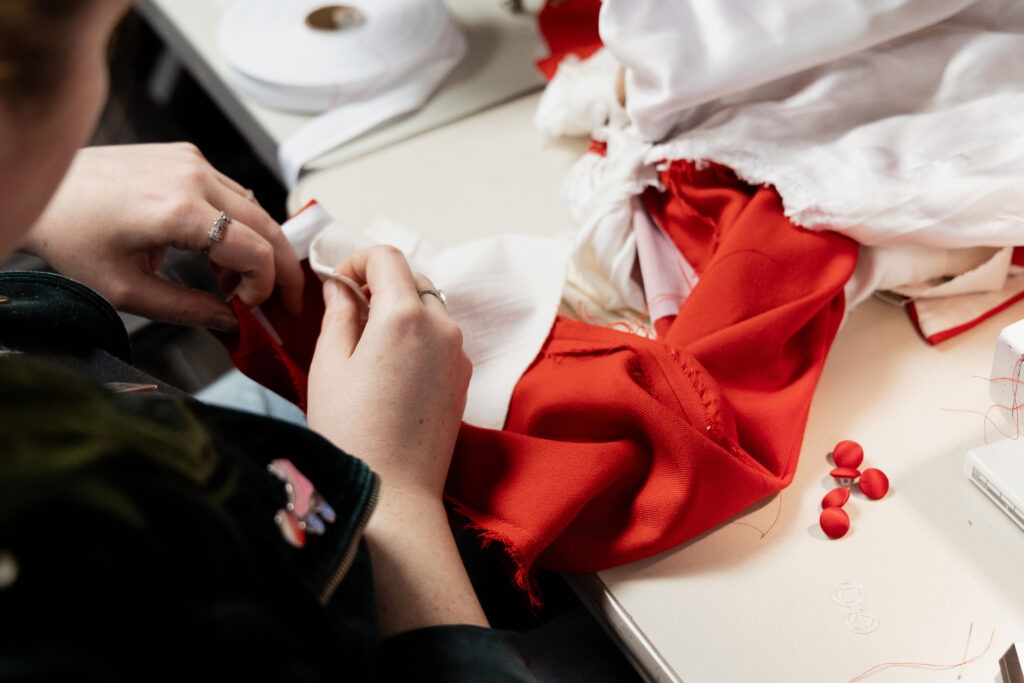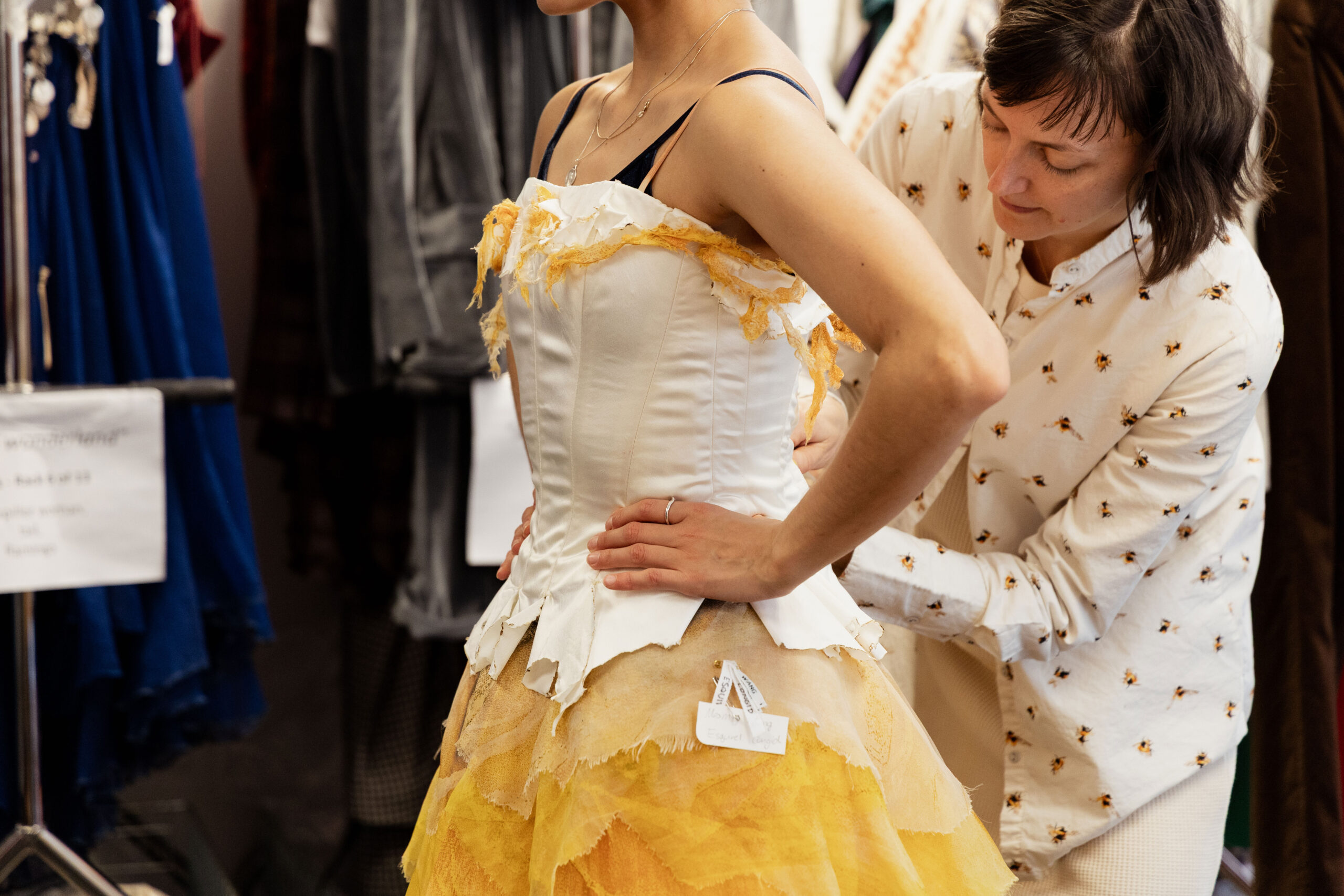“We’re all mad here,” the Cheshire Cat famously says in Lewis Carroll’s 1865 classic children’s tale Alice’s Adventures in Wonderland. But the Joffrey Ballet’s costume manager, Ellie Cotey, must keep her wits about her as she ensures the costumes and quick changes are seamless for the upcoming 14 performances of the three-act ballet based on the book. Cotey, now in her 11th season with the Joffrey, is set to take on one of her biggest productions yet as Alice comes to the Lyric Opera House June 5-22.
This version of the ballet, by Tony Award-winning choreographer Christopher Wheeldon and originally made in 2011 for the Royal Ballet of London, has a Red Queen, a White Rabbit, a purple-clad Alice, a psychedelic Mad Hatter, and menagerie of animals including a caterpillar, hedgehogs, and various rowdy rodents.
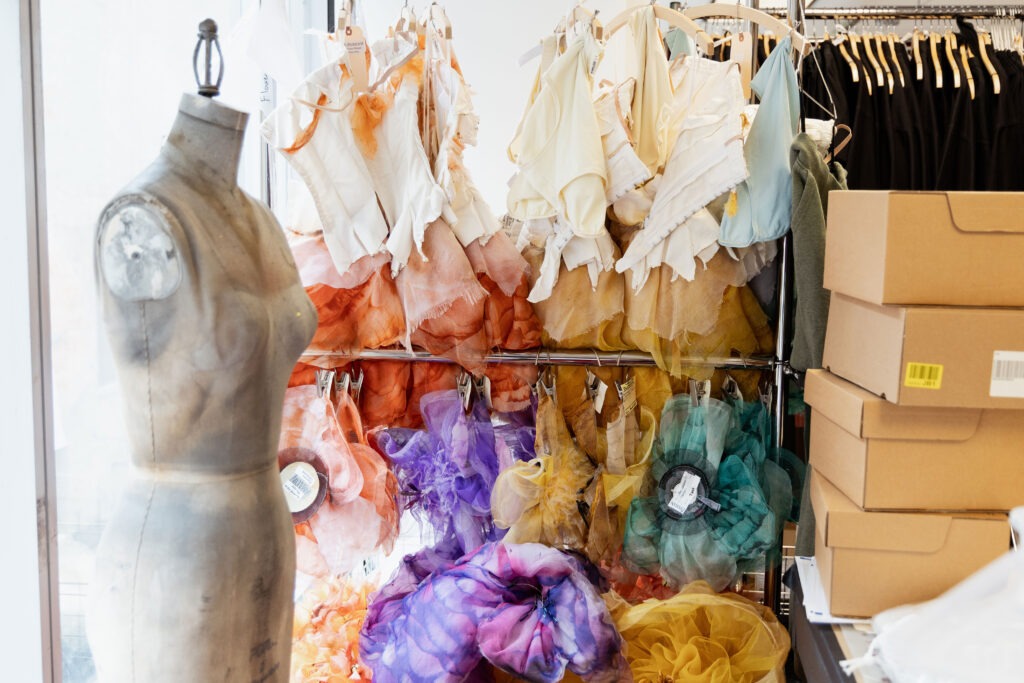
What makes the costumes for this production stand out — aside from the sheer number of them — are the intricate details and vibrance: The flamingoes’ arms, faces, and upper bodies painted a flamboyant pink; tights and shoes for animal characters hand-painted with detailed prints; fabric flowers with the edges burned to appear more organic; and a “magic” bunny tail that pops out of the White Rabbit’s pants using hidden magnets.
Chicago stopped by the studios for a sneak peek into what goes on behind the seams.
You joined Joffrey as a stitcher in 2014. What stands out from that first season?
I remember we had to be very careful altering the costumes because they were rented, and we had to send them back in the same condition. It was the first time I had done that, and it was valuable to learn. We are currently going through that same process with Alice since we rented the costumes from the Royal Danish Ballet.
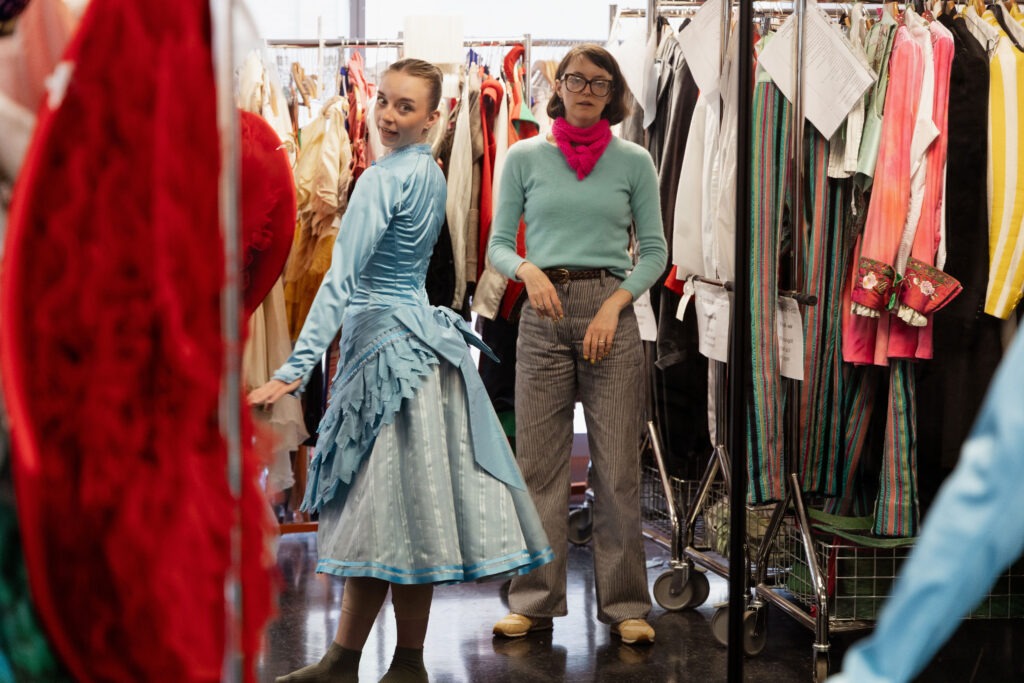
Wardrobe encompasses everything from hats, shoes, makeup, wigs, etc. How do you keep track of it all?
There are so many costumes. It’s a much bigger production than we’re used to. It’s bigger than our Nutcracker (also choreographed by Wheeldon). This ballet is usually done by a larger company. Our dancers are learning so many roles and we have a lot of extra dancers from the Grainger Academy, children, and a few seasonal dancers. On any given night, we might have more quick changes than originally planned for because someone might start as a maid and then they’re a flower and then a card. The possibility of that is huge, so it adds a little intricacy.
We have all the costumes you see on stage, plus at least 50% more because there are duplicates and extras. There are several casts of the character Alice, and she wears four different costumes during the show, so we have multiple sets of that. Then there are all the accessories. A lot of the characters have hats, headpieces, jewelry, masks, veils, etc.
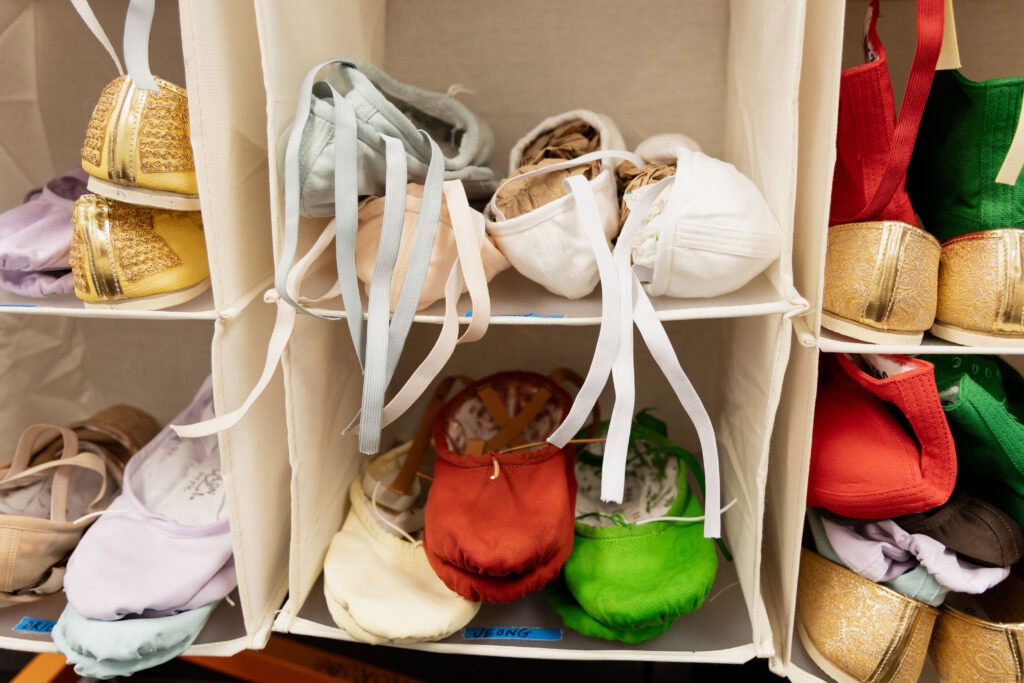
How many people are on your team?
We have six in the shop. When we’re at the theater, we will double to 12. Hair and makeup will be five at the theater. There’s a lot of makeup and wigs.
Walk us through the process of what happens when the costumes arrive.
We open all the racks that are wrapped up for shipping, unbox all the headpieces and accessories, then we start to look at the casting to size and measure everything to see what will fit best. We need a game plan. We put labels on all the costumes based on our assumptions of who will be dancing that role so that when a dancer comes in for a fitting, there are up to 15 costumes ready and waiting for them. This is a very tight timeline. Normally, we would want six months to prepare, but we will have about six weeks from when the costumes arrived until opening night.
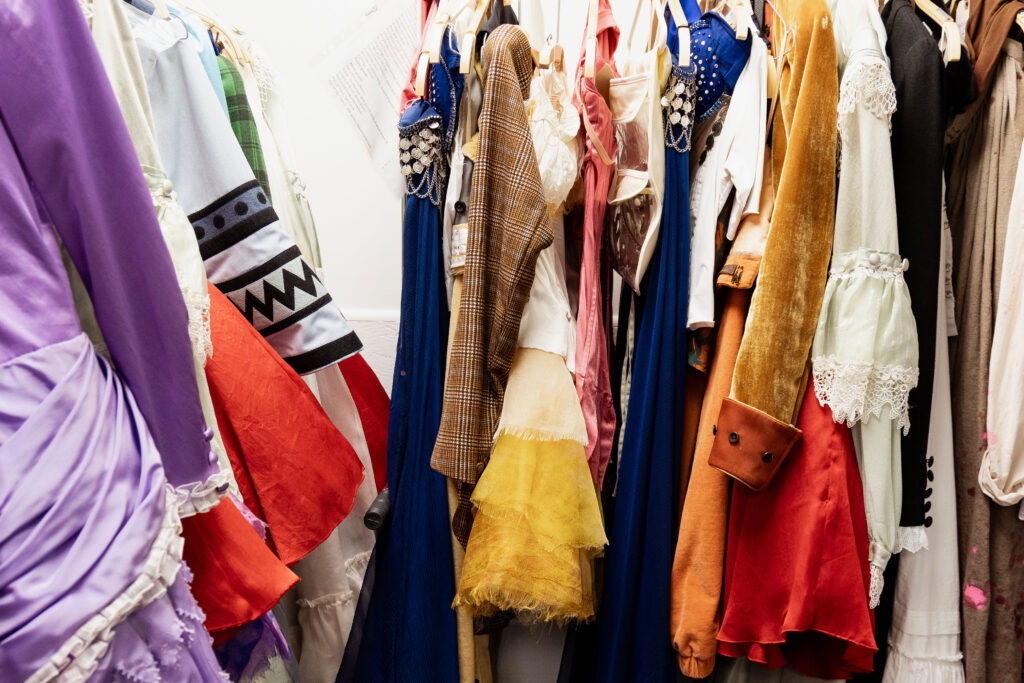
Pretend it’s a performance night. What goes on at the theater?
We arrive 90 minutes before the show to give out the dancers’ laundry, steam and press everything so it looks crisp, check for alterations, check for makeup stains, etc. There’s someone doing alterations from the night before. We also pre-set things for quick changes during the show.
What are some scenarios you and your team need to be ready for?
We need to be prepared for anything. In a show like this with a lot of shoes and accessories, someone is going to forget a glove, or a hat or sock, so there will be running to get that. We try to have extras ready to go, but there’s always running. We keep the costumes downstairs on the stage level, so it streamlines the set-up process for quick changes.
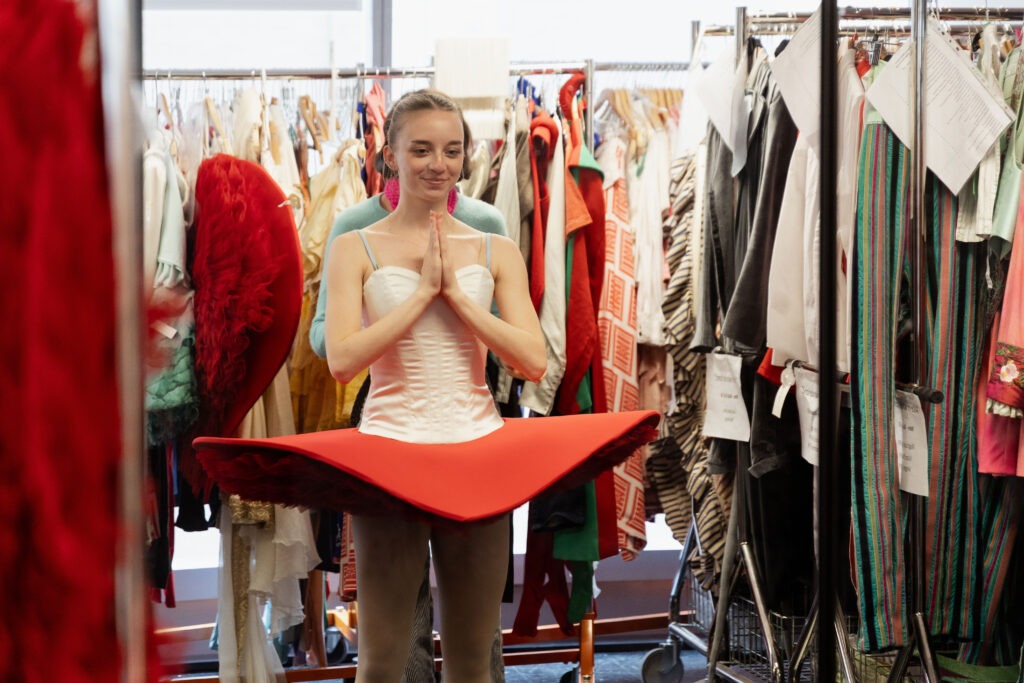
What makes the costumes for this show unique? What makes Alice, Alice?
They’re beautifully designed (by Tony Award-winning designer Bob Crowley). As a team that usually builds the costumes creating them from scratch, we’re having a great time seeing inside them. They’re so detailed and very well-made. A lot of them do tricks or illusions and when you look at them up close, they’re really clever. The Red Queen enters in a platform dress that she moves around in. That lives in prop land, but her actual costume, from wardrobe, is all red: red tutu, red tights, red shoes, red crown. The queens are thrilled! When they put their costumes on, they turn into the character of the Red Queen. The design is super successful. I’m a sucker for color telling the story in a ballet. It helps so much since the audience is so far away from the dancers. It tells who’s who and how they relate to each other. Alice uses color brilliantly. I’ve watched it a number of times now. It’s really fun. The dancers will tell me about certain parts where the dancing is hard. I’m not looking at that. I’m thinking, “where does that coat go?”
